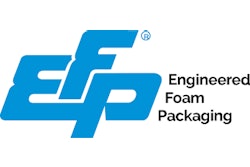These are important matters, but packaging professionals must not lose sight of a critical function of packaging that’s stood the test of time: The package must sell the product.
Since the industrial revolution, when products began shipping in crates and paper became a luxurious way to present a product, there have been folks who believe packaging is a necessary evil and those who feel packaging is a necessity to market and protect the product. Both views have their pros and cons, but today’s truth is that without some form of packaging, products would not survive shipping and handling. Furthermore, they would be unidentifiable on shelf.
Today’s age of bar and QR (quick response) codes requires a printable surface. In the 1800s, companies recognized the importance of having their company name and/or brand on crates and papers. Wooden crates for heavy items would have a company name “branded” into a wood slat so the public knew what was being supplied. Paper wrappers around cigars and other “fine” products would represent prestige and wealth.
Early on, businesses recognized that packaging subliminally directs the buying public. As local grocery stores grew, and larger retailers evolved and new products were introduced, the importance of selling a product at shelf level became a business strategy. Brand recognition became the buzzword in the food, beverage, automotive, health/hygiene, and household goods industries.
The ability to catch consumers’ attention and sell a product was and is very important, and companies began researching how to get consumers to stop and buy their products. How does a new company garner attention like the big brands? What do they do and how? Marketing firms help research brand images, icons, and company business statements. Depending on the industry, they determine if the brand needs to be soft and subtle such as the Gerber baby or loud and bold like the Doritos triangle chip. This is where packaging truly becomes synonymous with the product. Marketers use the physical structure to enhance, and in some cases create the brand and attributes such as Coca-Cola’s glass bottle, McDonald’s golden arches, Disney’s mouse silhouette and the iPhone’s soft, molded pulp box. These brands are recognized globally.
Many companies are spending an increasing amount of money on marketing and studying product purchase influences. Often, a key focus is the effect of packaging. Packaging also has become the avenue to document improvements (new and improved!), industry ratings (UL and Energy Star), any savings and any hazard alerts (Surgeon General’s warning on tobacco). It also is the surface where bar and QR codes are found. Another important factor to consumers and to the packaging engineer is how well the structure protects the product and whether the packaging is sustainable. Sustainability is becoming a marketing tool with the FSC (Forestry Stewardship Council) or SFI (Sustainable Forestry Initiative) icons on packaging. These indicate to the public that companies are actively working on being sustainable.
Today, there are brick and mortar needs and e-commerce needs. Packaging is vital for brand image, communication, and protection. What is found on the shelf needs to be found online and vice-versa. Consumers see a brand at either location and expect the same quality and price no matter how they buy the product. Consumers want an experience. When they buy a product, they expect the packaging to protect it and tell them what they are buying. They want sexy and exciting perfection in the soft curve of a perfume bottle. They are drawn to the bold graphics of a video game. For consumers, the physical packaging structure must marry protection with promoting the product and housing the graphics and images while being fiscally responsible. This want is subliminal and not easily captured in marketing studies, but necessary.
As our retail and commercial markets have evolved, so has the packaging, from being large signage to garner attention, to compact to be more sustainable. No matter the product or the message, packaging is the main proponent at shelf level to sell, sell, sell. In the long run, we are some form of “packaging professional” whether working in packaging engineering, design, marketing, sales, or recycling. The product and the package are synonymous, and it is up to all of us to communicate to create a strong image that differentiates either on the shelf, online, or in communications, while protecting the product to satisfy the consumer.
The author, Dawn Burcham, is an IoPP Certified Packaging Professional and PPM Packaging Lead/Co-Packing Fulfillment Manager at GE Lighting, a Savant Company, LLC. For more information on IoPP, visit www.iopp.org.



























